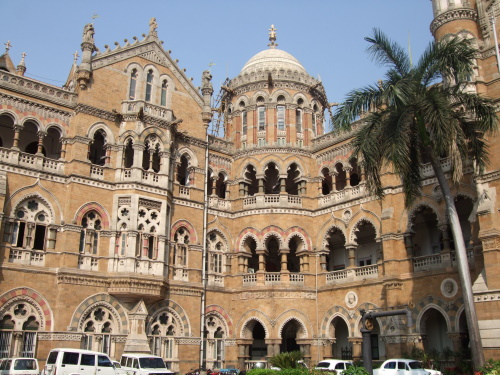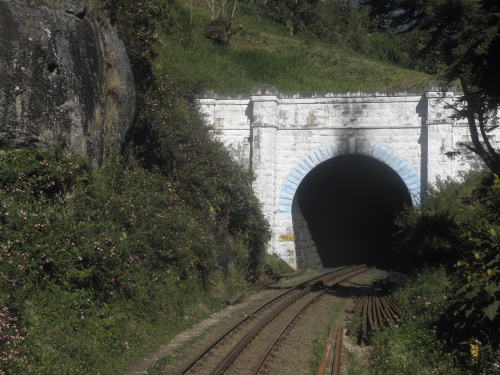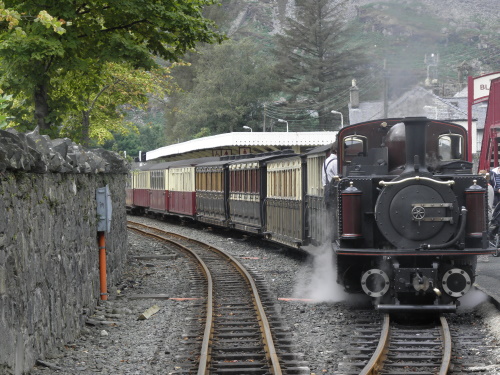Blog Connections
Railway WHS
WHS connected to Railways – apparently there aren’t enough of them yet, as Saudi Arabia, Iran and Peru have put new proposals on their Tentative Lists in recent years. As I am about to take a trip on the Transsiberian Railway shortly, I thought a closer look at objects related to trains might be of interest. That famous Russian railway system is on the 17th spot of our current Missing List by the way. It is so extensive and so much in use that I doubt that it will ever be brought forward to be included in the real List. As a magnificent feat of engineering that opened up Siberia, OUV would not be in dispute however.

Station buildings
Our current 50 entries in the ‘Railways’ connection comprise of about 13 ‘stand alone’ station buildings and 37 railway complexes including tracks and assorted buildings. The station buildings are mostly of interest because of their architectural features. Some notable examples include:
- Kaiserbahnhof Potsdam: only in representative use nowadays, it was constructed in 1909 in the English cottage style (to resemble an English country house). The German Emperor had his own private stairway to access the railway tracks. During the Second World War, it was used for the special train of Hermann Göring.
- Bath Spa Railway station: built in 1840 in an asymmetrical Tudor style with curving gables. The station is still in use. It was part of the Great Western Railway system, designed by Isambard Kingdom Brunel - an English mechanical and civil engineer who is considered "one of the greatest figures of the Industrial Revolution”.
- Santa Maria Novella railway station in Florence: this was constructed between 1932 and 1934, actually replacing an earlier station built by the I.K Brunel of Bath station fame. This modernist one came about after an architectural competition was won by a group of famous architects. A beautiful component is its “glass waterfall” window that illuminates the whole station.
- Grand Canyon Depot: built in 1909/1910, it is one of three remaining railroad depots in the United States built with logs as the primary structure material. It was built by the Santa Fe Railway to stimulate rail traffic for tourist purposes.

Railway construction history
Following the history of railway construction, we encounter the first WHS in the 16th century: possible the oldest operational railway is at Hohensalzburg Fortress. The line originally used wooden rails and human or animal power through a threadwheel.
Metal rails were introduced in the 18th century. A good example of that phase can be found at Blaenavon, where the Blaenavon Hills Tramroad was completed in 1817. It used horsedrawn carriages on iron rails.
The railways however really hit it off with the invention of the steam locomotive (1804). An interesting one is the Ffestiniog Railway , part of Welsh Slate Industry TWHS. Its steam-hauled narrow-gauge railway was adopted on a significant scale throughout the world. The Festiniog Railway Company which owns the railway is the oldest surviving railway company in the world. The line was constructed between 1833 and 1836, steam engines were used from 1863.
Another development in the 19th century was the construction of mountain railways. Semmering was the first (1854), the Darjeeling Himalayan Railway in 1881, the Jungfraubahn’s construction started in 1896 and the Rhaetian Railway in 1908.

The Future
So what about the future of Railways and WHS? There’s a (smallish) thematic study available from ICOMOS called ‘Railways as World Heritage Sites’ (1999). The author sees railways above all as socio-technical systems, where it is “impossible to separate out the ‘social’ and ‘technical’ aspects”. Focus of future nominations could be on the remains of early railways (before 1830) and on technological innovations.
Possible candidates included in that study are the Moscow Underground (symbol of the modernization of Russia under the Soviet regime), the Great Zig Zag in Australia (the first railway to penetrate into the interior of Australia & the two zigzags on this line were the first such structures in the world) and the Japanese Shinkansen (exemplifies the international technology transfer in the modern period ..”it was to be a decade before anything like it would be emulated outside Japan”). Some great candidates for a 2019 Missing List here!
Els - 1 September 2019
Comments
Jay T 1 September 2019
Also, to add to the WHS Connected to Railways, Ombilin Coal Mining Heritage, which was inscribed this year, also includes the “ingeniously engineered” railway network linking the mines to the port.
Jay T 1 September 2019
Quite an awesome topic; I love traveling by rail, and there are many railway journeys I’d still love to travel. I hope you enjoy the Trans-Siberian!
It’s been brought up before in the forums, but another potential recognition for railway architecture would be railway hotels. Canada is particularly well-known for these, with a series of urban and national park-based hotels built by the Canadian Pacific. Indeed, some of these are already included in other Canadian WHS, such as Quebec City and the Canadian Rocky Mountain Parks. The US has some of its own railway hotels in national parks, with their own style of “parkitecture”, though many of these are included with national parks already inscribed on the list, to include Yellowstone, Glacier, Yosemite, Olympic, and Grand Canyon.
Els Slots 1 September 2019
Thanks for highlighting Ironbridge, Caspar. I already thought there must be something rail related there. Will add it to the Connection.
Caspar Dechmann 1 September 2019
Thank for this interesting article! As a predecessor to the bleanavon railway I find the much older rails at the Museum of the gorge in Ironbridge very interesting. They are plateway grooves for unflanged wheels, set directly into the paving of the wharf and used for horsedrawn carriages to transport goods from the wharf to the factory.